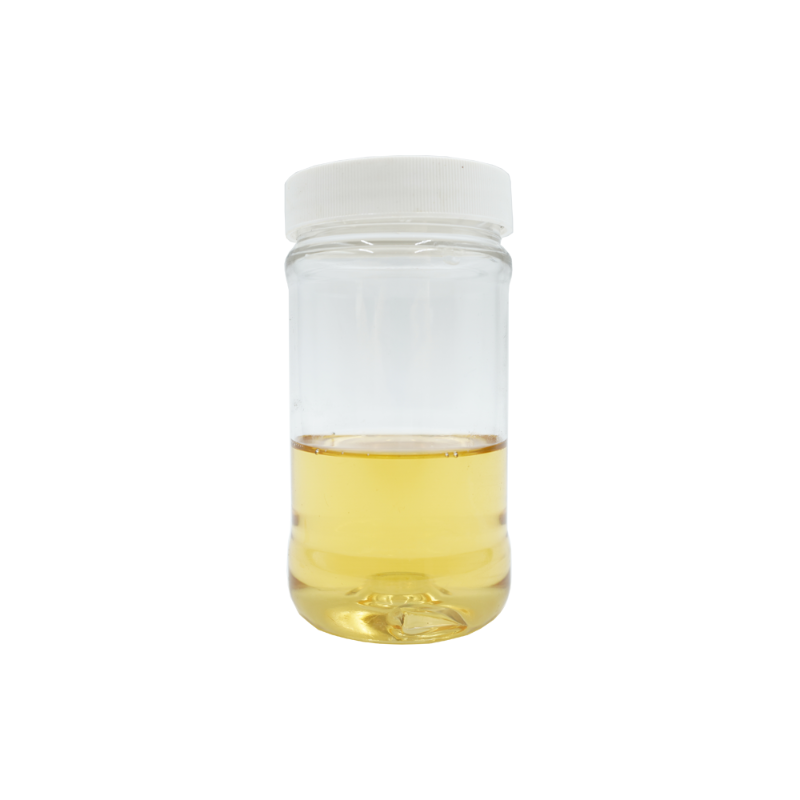-
Categories
-
Pharmaceutical Intermediates
-
Active Pharmaceutical Ingredients
-
Food Additives
- Industrial Coatings
- Agrochemicals
- Dyes and Pigments
- Surfactant
- Flavors and Fragrances
- Chemical Reagents
- Catalyst and Auxiliary
- Natural Products
- Inorganic Chemistry
-
Organic Chemistry
-
Biochemical Engineering
- Analytical Chemistry
- Cosmetic Ingredient
-
Pharmaceutical Intermediates
Promotion
ECHEMI Mall
Wholesale
Weekly Price
Exhibition
News
-
Trade Service
Part.1
Abstract
Using the two-step method, developed into a heavy anti-corrosion powder coating epoxy resin and curing agent, its main performance indicators reached the level of similar products abroad. This paper introduces the preparation process of epoxy resin and curing agent, and discusses the factors affecting its performance Part.2
Foreword In recent years, with the rapid development of China's economic construction, the demand for epoxy resin and curing agent for heavy anti-corrosion powder coatings in oil and gas buried pipes is increasing, and the quality requirements are getting higher and higher.
requirements in this regard are mainly reflected in: the requirements of anti-corrosion powder coatings with good construction (high temperature rapid curing), wear resistance, corrosion resistance, heat and cold impact resistance, long-term stability and
.
with the start of China's "West-East Gas Transmission" project, the demand for high-performance heavy anti-corrosion powder coatings will increase rapidly.
In order to break the monopoly of foreign epoxy powder coatings in this field, we have carried out research on epoxy resins and supporting curing agents for heavy antiseptic powder coatings, and developed special epoxy resins and curing agents with similar properties close to 1.7% of similar products abroad.. Part.3
Experimental Part 1. Synthesis of selected
1.1 epoxy resins on technical routes
Based on the infrared and liquid photogram analysis of foreign epoxy resin samples, the basic groups are determined to be divided into phenolic epoxy resins. The molecular structure of the resin includes both bisphenol type A phenol and phenol aldehyde component, which is a compound phenolic epoxy resin.
the resin has strong corrosion resistance, high hardness, good wear resistance and so on. The synthesis method is two steps: the first step is the synthesis of the line phenolic resin, and the second step is the synthesis of the phenolic epoxy resin.
1.1.1 Synthesis of line phenolic resin
put phenol, bisphenol A, formaldehyde into the reactor, stirring and dissolving, to 90 degrees C to add catalyst reflow reaction 3 to 5 h;
repeatedly washed with hot water to neutral, and then heated up dehydration, in a vacuum above 150 degrees C / 0.095 MPa to remove a small amount of free phenol, filtration, material, that is, line phenolic resin. The synthesis flow chart of the line phenolic resin is as follows: 1.1.2 phenolic epoxy resin synthesis
the first step of synthesis of the line phenolic resin and the measured epoxy chloropropane into the reactor, heating dissolved, added catalyst in 80 to 90
degrees C etherization reaction 5 to 6 h; Sodium hydroxide water solution, closed-loop reaction, add residual solvent, stirring dissolved, repeated washing with hot water to neutral, divided out the lower water;
heating off solvents and low boiling matter, in 140 to 160 degrees C insulation 1 to 2 h, no liquid after cooling; filtration, tablet crushing, packaging, that is, phenolic oxide resin. The synthesis flowchart of phenolic epoxy resins is as follows: 1.2 Curing Agent Preparation
The previous anti-corrosion epoxy powder coatings used a multi-cyanide-mide curing system. Although the system has a relatively fast reaction speed, but the curing reaction heating intense, easy to produce internal stress, so that the coating film brittle.
analysis of foreign curing agent samples, the main group is divided into end hydroxy polymer and anion catalytic curing agent compound, through the synergy between the two, to ensure that powder coatings have good flexibility, but also a faster reaction speed.
high-molecular hydroxyl compounds can be end hydroxyl polyester or end hydroxyl polyether resin, or end hydroxyphenol resin. The reaction activity of the latter is higher than that of the former, which is more flexible than the latter.
the above analysis, combined with the sample analysis results, the composite curing agent system of end hydroxyl polyether, end hydroxyphenol resin and anion catalytic curing agent was selected.
put the measured binary alcohols (new glycol, hexanols, polypropanosterols, etc.), binary phenols (to phenols, interphenols, bisphenol A, etc.) and single and biceplic oxides into the reactor, heating and dissolving, in 90 to 130 degrees C for polymerization reaction;
When the softening point meets the requirements, cooling, filtration, material, that is, the end of hydroxyl polyether resin, its synthesis flow chart is as follows:end hydroxyphenolic resin synthesis process and line phenolic resin is basically the same. The synthetic end hydroxyphenol resin, end hydroxyl polyether resin into the reactor, heating up to 150 degrees C melting.
to be fully melted, add the metered anion catalyst, mix well, filter, press, and pack. The compounding flowchart of the curing agent is as follows: 2. Results and discussion of the effects of 2.1 process conditions
factors affecting the synthesis of phenolic epoxy resins include phenol/aldehyde molar ratio in line phenolic resin synthesis, reaction temperature and time, composition of phenols, and phenolic chloropropane, alkali, catalyst and phenolic resin molar ratio in phenolic epoxy resin synthesis.
2.1.1 Factors in the synthesis of line phenolic resin
in the synthesis of in-line phenolic resin, with the ratio of BPA to phenol increased, the softening point of the resin increased, the hardness and temperature resistance of the coating film increased, but the softening point of the resin is too high, will make powder processing difficult.
1/2 to 1/4 for bisphenol A/phenol. With aldehyde / phenol molar ratio decreased, aldehyde volume decreased, phenol reaction rate is low, the resin softening point is low, the resin softening point is also low, easy to lump.
but the softening point of the resin is too high and not suitable for processing, and the solubility is reduced, the oxidation is difficult. Aldehyde/phenol molar ratio is suitable for 3/4 to 4/5.
reaction temperature of the phenolic resin is generally the reflow temperature (85 to 95 degrees C) and the time is 4 to 6 h. The reaction time is too short and the reaction is not sufficient, and the reaction time is too long, which has little effect on the improvement of reaction yield.
2.1.2 Factors in the cyclooxidation of phenolic resin
in the cyclooxidation of phenolic resin, with the increase of epoxy chloropropane dosage, the epoxy value of the resin increases, the softening point decreases, and the brittleness increases.
taking into account the comprehensive performance of the coating film and the processing performance of the powder, the epoxy value of the resin is controlled at 0.11 to 0.13 eq/100 g, corresponding to the epoxy chloropropane dosing of 1 / 1.0 to 1 / 1.2 (mol / syroxyyl), the amount of alkali is generally controlled with ethylene chloropropane and other moles or slightly excessive.
2.2 Curing agent influence factors
the most important factors affecting the performance of curing agents are the ratio of end hydroxyl polymer compounds to anion catalytic curing agents, followed by the molecular weight of end hydroxyl polymer compounds and the molar ratio of phenolic and polyether.
In this compound-type curing agent, the curing reaction of end hydroxyl polymer compounds and anion catalytic curing agents is different: end hydroxyl polymer compounds are mainly added polymerization through end hydroxyl and epoxy, so that the molecular chain gradually grows;
anion catalytic curing agent is through anions acting on the epoxy base to open the ring of epoxy, forming a new anion, this new anion and epoxy-based reaction, so that the molecular chain growth. The effects of anion catalytic curing agent dosage can be found in Table 1.
determination of the ratio of 2.3 epoxy resins to curing agents
The test results for different collation times and impact strength of epoxy resins and curing agents are found in Table 2. Table 2 The gel time and impact strength test results of different matching epoxy resins and curing agents.
can be seen from Table 2: with the increase in curing agent dosage, the gel time is shortened, its dosage is too high or too low, so that the impact strength is reduced. The reason is that the amount of use is too low, curing is not complete, the reaction is slow, the amount of use is too high, a certain official group too much, will make the chain growth blocked, the molecular weight decreased, so that the impact strength decreased.
2.4 Coating performance test
by resin: curing agent s 100:25 to 26, plus other pigments and additives, such as the production of standard models, the mechanical properties of coating, chemical resistance, electrical performance testing, the results can be seen in Table 3.
3. Conclusion
(1) The technical index and performance of epoxy resin and curing agent used in heavy anti-corrosion powder coating developed are close to the level of similar products abroad, and can meet the requirements of steel pipe heavy anti-corrosion epoxy powder coating.
(2) Using a two-step legal system of mixed phenolic epoxy resin, polymer-end hydroxyl compounds with anion catalytic curing agent composed of epoxy curing agent system, to meet the processing process requirements of heavy anti-corrosion powder coatings and coating mechanical, electrical and chemical resistance and other performance requirements.
(3) The factors that affect the synthesis of epoxy resin are: the composition of line phenolic resin, the ratio of raw materials, the reaction temperature and time, and the factors affecting the properties of curing agents are: the composition and molecular weight of high molecular end hydroxyl compounds, the amount of anion catalytic curing agent.
.






